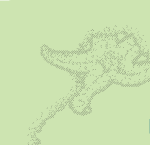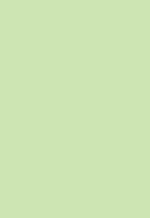Pacific Coast Biogeographic Patterns
The initial findings of the Coastal Biodiversity Survey are striking. The surveys reveal distinct groups, where the composition of the intertidal communities is similar. Within some of the groups smaller regions of similarity are found. Each region is represented by a different color on the map below.
In some cases, the results confirm previously known biogeographic boundaries, such as Point Conception. Point Conception is the northern/southern limit of many species of invertebrates and algae along the coast. In other cases, the results reveal new biogeographic boundaries such as Point Reyes, California.

Group 1 RED
Group 1 is made up of sites found in southeast Alaska and northern British Columbia. These four sites are less diverse and are dramatically different from any other site to the south.Group 2 BLUE
The largest region of similarity ranges from northern British Columbia to Point Reyes, California. Northern species of algae and invertebrates dominate this region.The boundary between Group 1 and 2 has yet to be fully defined. Future plans for the Coastal Biodiversity Surveys include establishing new sites in southeast Alaska and British Columbia.
Group 3 GOLD
The next largest span of similarity, Group 3, extends from Point Reyes, California to Point Conception, California. It is characterized by a combination of northern and southern invertebrate and algal species. High larval recruitment in this region also affects the composition of intertidal communities.Group 4 PINK
Group 4 ranges from the southern part of Point Conception into Baja California Norte, Mexico and includes the Channel Islands. The Channel Islands are located south of Point Conception but are bathed by the cool waters of the California Current, giving them a unique mixture of northern and southern invertebrate and algal species. This same mixture of northern and southern species are found at the Baja California Norte, Mexico sites where upwelling occurs seasonally, exposing these sites to cold water.Group 5 GREEN
Group 5 is situated in the middle of Group 4 and composed of sites in San Diego County and on Santa Catalina Island. This region is dominated by southern invertebrate and algal species that are found in the warm waters of the California Bight, which hugs the coastline in this area. Offshore islands also decrease the amount of wave impact. See Channel Islands Biodiversity for more information.
Group 6 PLUM
Group 6 is made up of the three southern sites in Baja California Mexico. Many species found at these sites are also found in the Gulf of California and are distinctly different from sites to the north.Group 7 LIGHT BLUE
Group 7, light blue line, is located in the Gulf of California along the coast of the Mexican state of Sonora. This Group represents an entirely different suite of species than the pacific coast. Four sites were surveyed here in 2002. Future plans for the Coastal Biodiversity Surveys include establishing new sites on various islands in the Gulf of California.BACK to top











